Just how important is saddle setback? Plus how to tell if yours is too far forwards or backwards
A small adjustment here can have big implications on the stresses put through your hands, shoulders and back - as well as the muscles recruited when pedalling
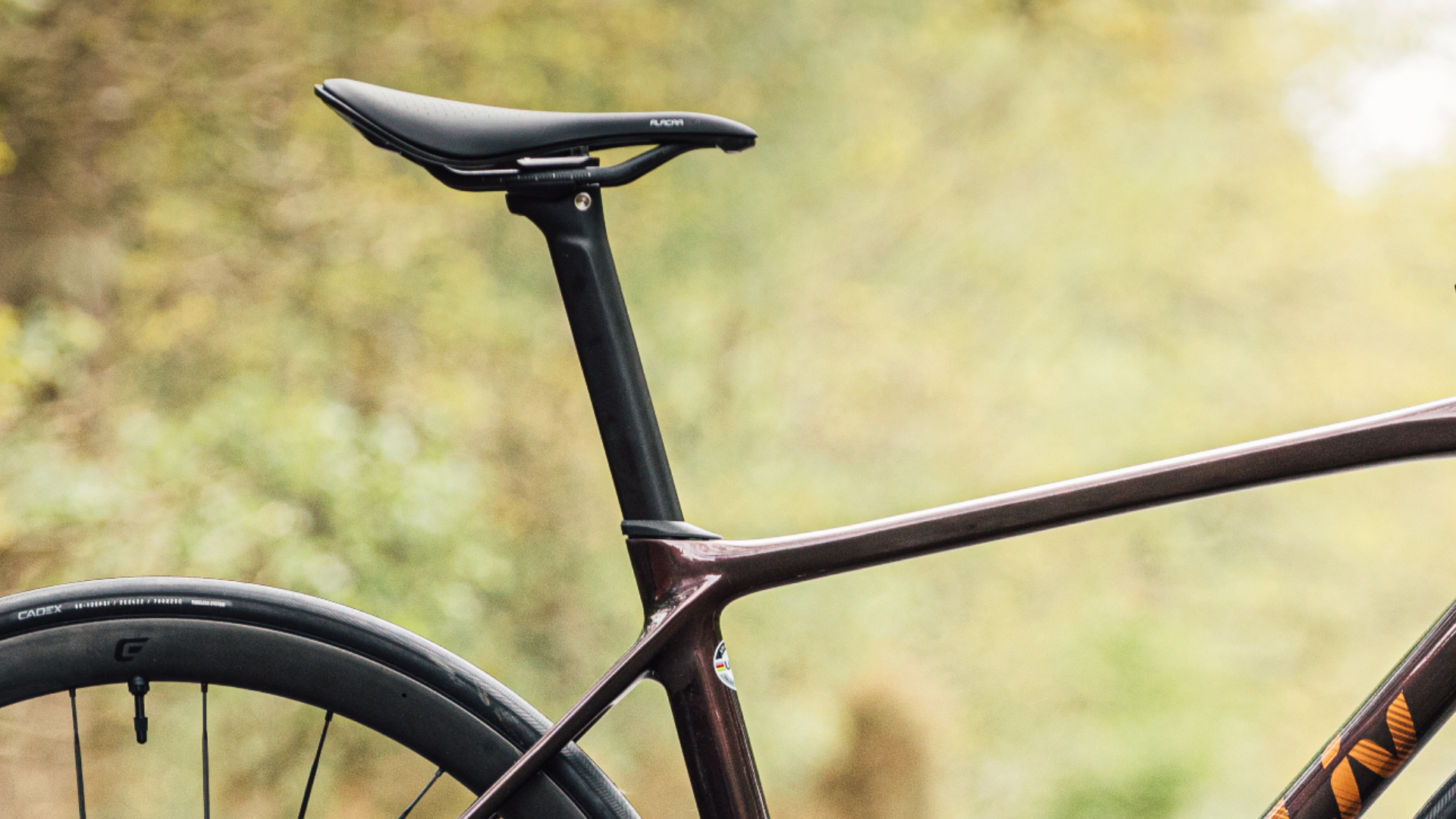
Saddle setback, also known as saddle fore-aft, is the horizontal distance between the centre of the bottom bracket and the front of the saddle. This measurement will be influenced by the length of the saddle, which needs to be considered when comparing setbacks on different bikes if a different saddle is used.
Read on to find out how saddle setback is measured, why it's important to get this bike fit parameter right, and tips on how to set the correct saddle setback.
How is saddle setback measured?
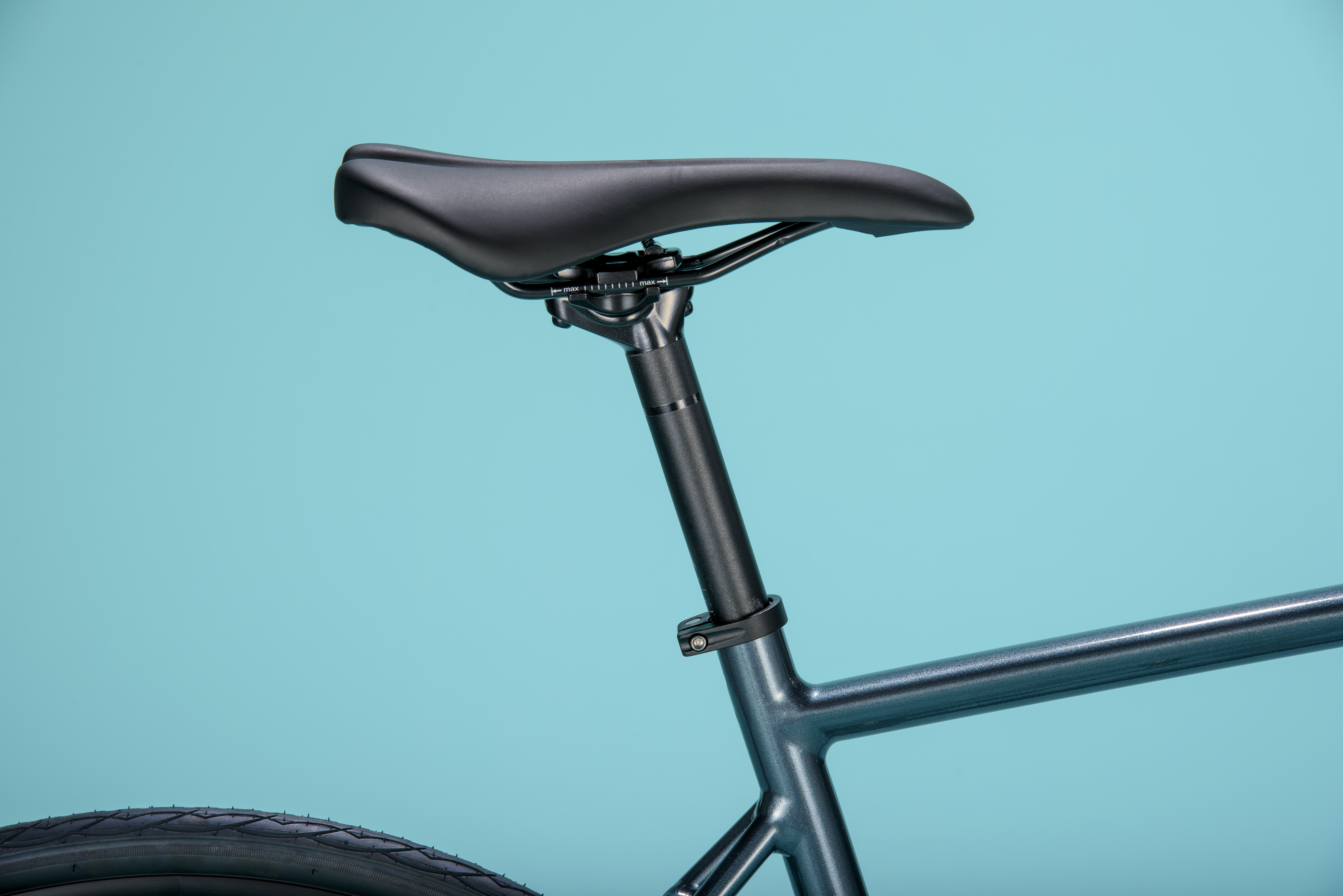
There are various ways to measure setback.
Placing the vertical line of a laser through the centre of the bottom bracket then measuring the distance to the tip of the saddle is the method I use in clinic. A plumb bob can also be hung from the tip of the saddle and the distance from the centre of the bottom bracket measured.
If you do not have any equipment, setback can be measured by placing the back wheel against a wall and measuring the horizontal distance from the wall to the centre of the bottom bracket and then again to the tip of the saddle then calculating the difference.
Why is correct saddle setback important?
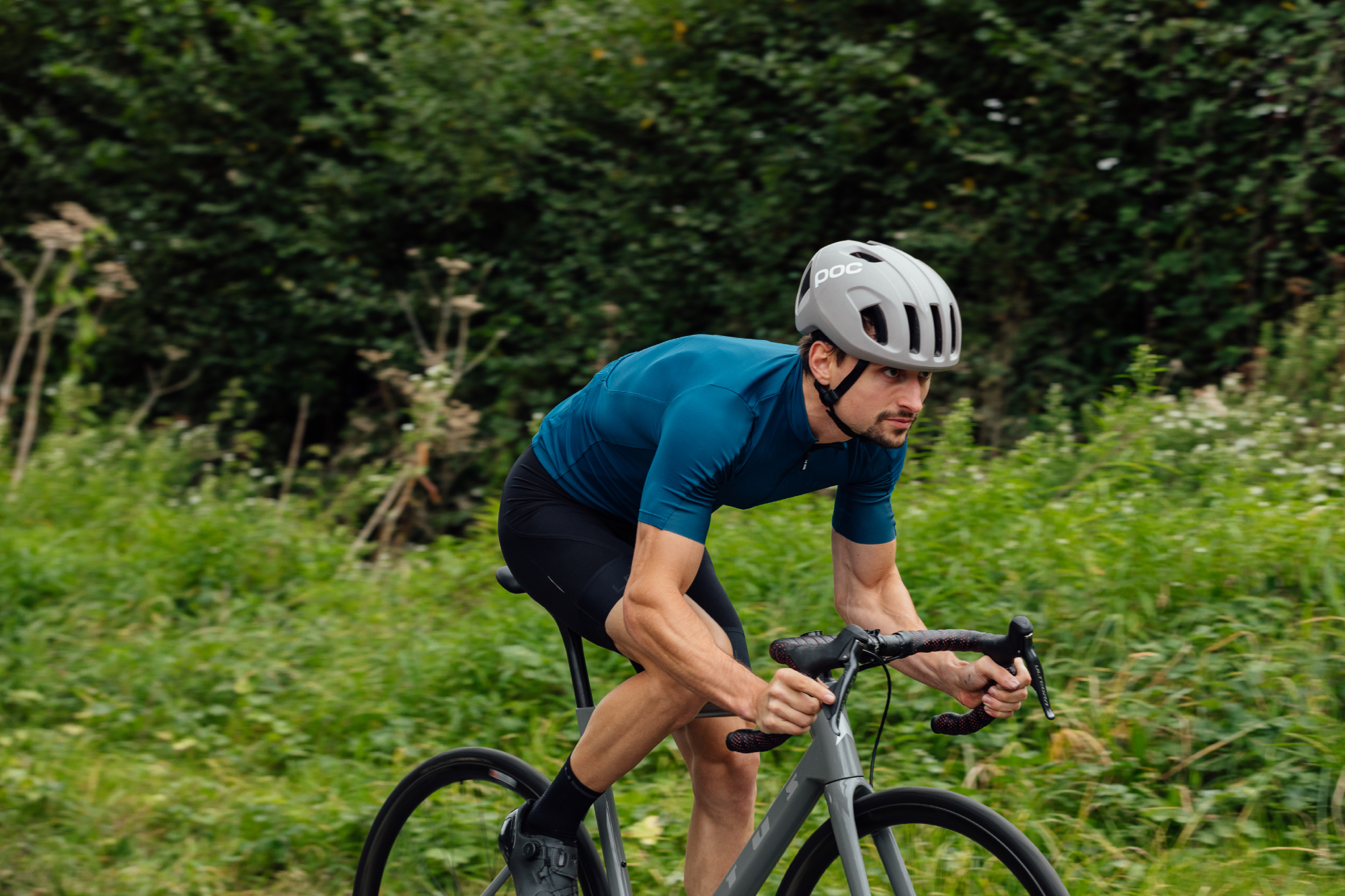
Saddle fore-aft is the main adjustment affecting weight distribution on the bike and how much upper body work is needed to stabilise the body under load. The goal is to unload the upper body and hands to prevent expenditure of excess energy through tension in the upper body and allow efficient breathing. Uneven weight distribution between the handlebars and saddle can also cause discomfort and injury at the contact points.
Correct saddle fore-aft will also promote good weight balance between front and rear wheels. Road bikes are designed to handle best when 55 per cent to 60 per cent of bicycle and rider weight is on the rear wheel and 40 per cent to 45 per cent is on the front wheel. This will enable good handling and control when descending and cornering.
Get The Leadout Newsletter
The latest race content, interviews, features, reviews and expert buying guides, direct to your inbox!
An ideal saddle setback will allow the muscles of the pelvis and the lower limb to produce power more effectively by sharing load evenly among the major muscle groups. How far forward or back the saddle is placed will change the relative contribution of the quads, hamstrings and glutes. It needs to be based upon a combination of the cyclist’s flexibility, strength, bias to use certain muscle groups, and injury history.
Hip angle is also influenced by saddle setback. The more forward the saddle, the more open the hip angle is (less hip flexion) and the further back it is, the more closed the hip angle.
How do I know my saddle is too far forward?
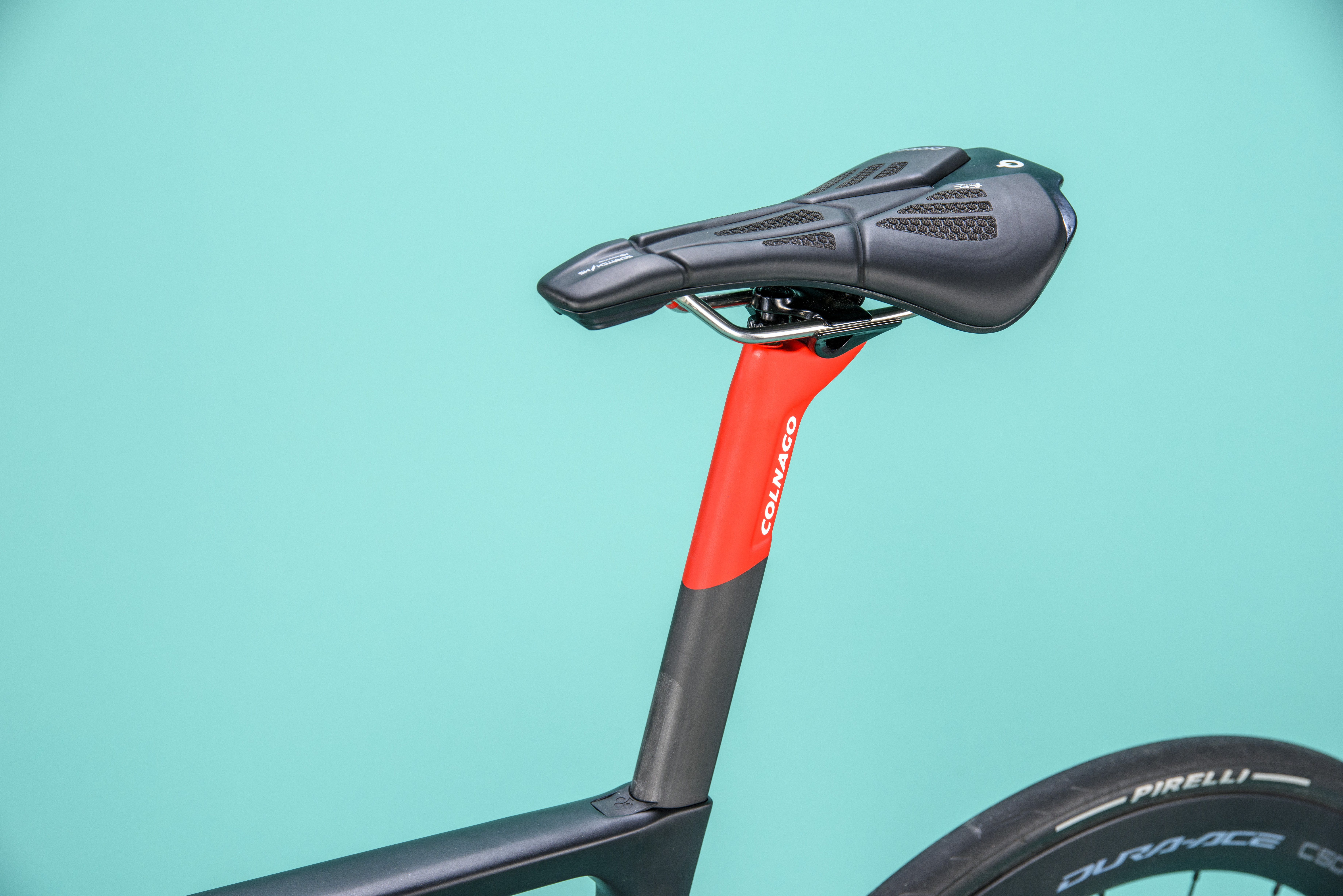
The main symptom of having the saddle too far forward is an increased load on the upper body and handlebars. This may manifest as pressure, pain, numbness or tingling in the hands or wrists, and increased tension and pain through the neck, upper back and shoulders.
The next most common complaint of a saddle too far forward is an over-reliance on the quad muscles with a feeling of quad burning or early fatigue. This is generally at the expense of recruitment of the gluteal muscles, which are capable of producing a lot of power.
It is thought that an increase in the work of the quads can create greater forces through the patellofemoral (knee cap) joint, with the potential to aggravate structures around the knee causing pain and injury. However, a study by Bini in 2012 and again by Menard in 2018 found no significant change in patellofemoral joint compression forces of a forward seat position.
In terms of handling, with the saddle, and therefore weight, too far forward, the rear wheel will be less weighted and therefore riders may experience decreased traction on the rear wheel and skidding.
Some of these issues are experienced when the saddle is pushed forward to compensate for excessive reach. Saddle fore-aft should not be used to adjust the reach of the bars, rather the length of the stem and/or handlebars need to be changed, or a bike with different geometry considered.
What happens if the saddle is too far back?
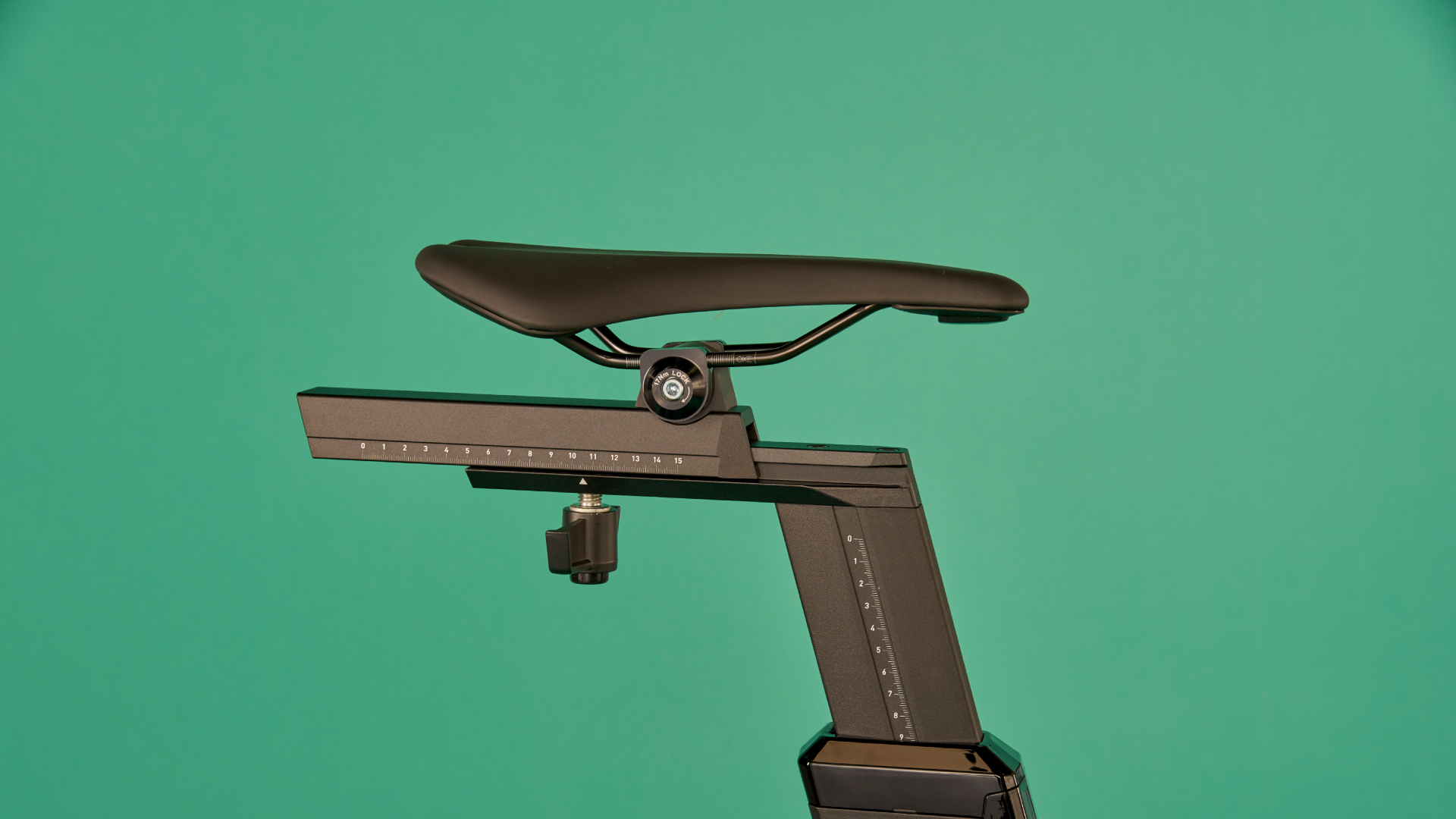
Having the saddle too far back can result in a feeling of over-reaching at the bottom of the pedal stroke creating a dead spot through bottom dead centre and a resultant loss of power.
Furthermore, this over-reaching can promote a toe-down pedalling style, decreasing foot and ankle stability. Others will experience difficulty increasing cycling cadence due to this dead spot.
Excessive reach to the handlebars may also result. This can cause a myriad of discomforts such as back, neck, and shoulder pain, and hand and wrist pain, tingling or numbness.
The further the saddle is placed back, the more closed the hip angle becomes. This is particularly true for those lacking flexibility in the posterior chain muscles (hamstrings, gluts) as they will be unable to rotate their pelvis forward to lessen hip flexion. These people may also experience reduced power as these muscles are forced to operate outside their optimal length-tension. The problem will be compounded if the handlebars position is especially low.
A excessively closed hip position can result in hip impingement (jamming of the ball against the front of the socket in the hip joint) and needs to be considered in those with a history of hip pathology and who have poor hip flexion range and stiff hip capsules.
A set back saddle will engage the hamstrings complex more. If this is excessive it can overload these muscles causing pain, fatigue, or cramping in the hamstrings, or pain at the insertion points of the hamstrings on the bottom of the pelvis or back of the knee.
Too much weight on the saddle can cause saddle sores or excessive pressure and discomfort where the pelvis contacts the saddle.
Finally, too much weight on the rear end of the bike will decrease front wheel traction and stability causing issues in particular with high speed cornering.
The time trial position
In time trialling, aerodynamics is key, and a lower front end is achieved by rotating the whole rider forward about the bottom bracket. The saddle is much more forward on a TT bike to allow a more open hip angle with a low front end, with the knee often being quite forward of the pedal spindle.
The rider is able to tolerate much more weight on the front end as the upper body, elbows and forearms support this weight on aero bars. Handling is also not as much of a concern in time trialling.
How to set the correct saddle setback
KOPS
KOPS, or Knee Over Pedal Spindle, is a traditional way that some bike fitters have used to set saddle setback. According to KOPS, a vertical line from the tibial tubecle (the bony bump below the knee cap) should intersect the centre of the pedal spindle when the crank arm is at 90 degrees on the downstroke. It is a static measurement i.e. it is taken when the rider is not pedalling.
The origin of KOPS is generally unknown, but one of the earliest publications on bike fitting by CONI (the Italian National Olympic Committee) in the early 1970s describes it’s use. There does not appear to be a clear rationale or biomechanical reason for using KOPS to set saddle fore/aft, however, experienced fitters such as Andy Pruitt (Complete Medical Guide for Cyclists) and Phil Burt (Bike Fit) also advocate it’s use in their publications.
On the other hand, KOPS has been heavily criticised by other experienced fitters, most notably Keith Bontrager and Steve Hogg. Bontrager wrote a paper called “The myth of KOPS” in which he argues that KOPS is an accidental relationship with no basis in physics or physiology. Both Bontrager and Hogg consider the rider’s centre of gravity as a more important factor in setting saddle setback.
KOPS is an easy technique to learn, understand and apply, which may be the reason for it’s widespread use. It can be a good starting point or guideline rather than being used in isolation, as bike fitting should not be a set of simple rules and formulas.
Balance Test
The Balance Test is another method that has been used to determine saddle setback, and assesses where the centre of gravity falls on the bike.
With the bike set up on a trainer, the rider pedals in the drops at about 85 per cent effort and at their normal cadence. When sufficiently warmed up, the hands are taken off the handlebars and placed back to the hips. The rider should be able to pedal without falling forward or rounding their spine for at least 5 to10 seconds.
The ideal fore/aft position is as far forward as possible whilst still maintaining this balance point. However, this method is quite dependant on having good core stability. It also assumes saddle height and tilt are correct.
What to think about when setting your saddle setback
Saddle fore-aft should aim to set the rider’s centre of gravity in the position on the bike that does not cause undue discomfort, is not too fatiguing, is functionally stable and allows good weight distribution between front and rear wheels. It also should promote an even spread of load through the muscle groups.
Various starting points can be used, such as the KOPS or Balance Test methods as discussed above, or even the rider’s current position. Small adjustments can be made from there to achieve an ideal position. Remember that as the saddle setback is adjusted, the saddle height will also change e.g. moving the saddle forward 10mm effectively decreases the saddle height by 3mm.
Cyclists with long leg to torso ratios may need a zero offset seat post to achieve the correct setback due to a high saddle height.
Individual characteristics need to be considered when determining an ideal saddle setback, with flexibility and range of motion already mentioned. Anatomical variations such as long femurs (thigh bone) and large upper body mass will require more setback. Those with a long torso to leg proportion will generally also be more setback. However, “effective” torso length, which is determined by the ability of the rider to extend the spine and rotate the pelvis forward, should be considered rather than actual torso length. A longer effective torso will result in more hip flexion and better recruitment of gluts.
Core or functional stability will also have an impact on saddle setback. Those with good core strength and the ability to hold themselves in the lean forward position, will be stable in a variety of fore-aft positions, whilst those who are inherently unstable won’t be able to relax their upper back, shoulder and arms.

Thank you for reading 20 articles this month* Join now for unlimited access
Enjoy your first month for just £1 / $1 / €1
*Read 5 free articles per month without a subscription

Join now for unlimited access
Try first month for just £1 / $1 / €1
Nicole Oh is a physiotherapist and bike fitter, with training in biomechanical assessments, sports injury rehabilitation, acupuncture and clinical pilates.
A competitive cyclist with a background in triathlon, Nicole raced at National level in the UK, also managing and co-founding the Les Filles Racing Team. Having moved to Sydney, she works as a physiotherapist at The Body Mechanic and continues to race competitively.
-
 Kim Le Court outsprints Demi Vollering and Puck Pieterse to take Liège-Bastogne-Liège Femmes victory
Kim Le Court outsprints Demi Vollering and Puck Pieterse to take Liège-Bastogne-Liège Femmes victoryMauritian edges out former Tour de France Femmes winner and La Flèche Wallonne champion to take unexpected win
By Tom Thewlis
-
 Urgent search launched for British Paralympian reported missing in Las Vegas
Urgent search launched for British Paralympian reported missing in Las VegasGB para-cyclist Sam Ruddock was last heard from on 16 April
By Tom Davidson